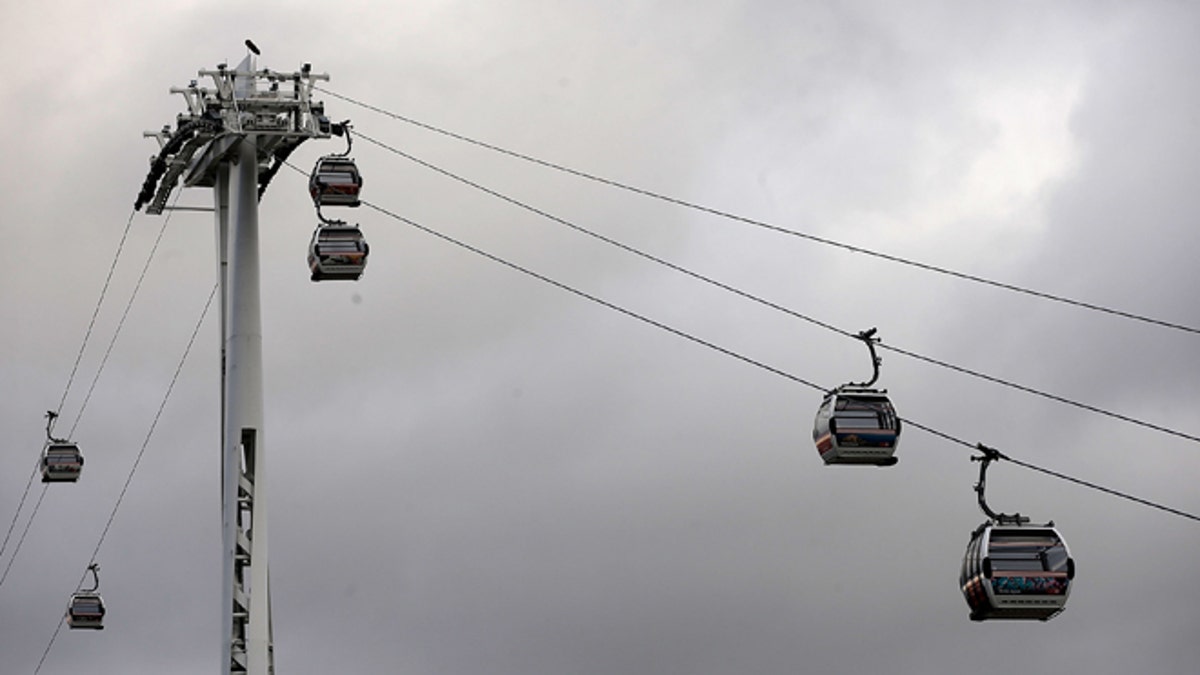
LONDON, ENGLAND - JANUARY 27: The Emirates Air Line cable car which runs between North Greenwich and Royal Victoria Docks on January 27, 2014 in London, England. The cable car, which was built in time for the Olympic Games, is taking 35% lower visitors than predicted. (Photo by Matthew Lloyd/Getty Images) (2014 Getty Images)
It’s not easy to get around the Bolivian capital of La Paz. The high altitude, the chaotic traffic clogging the streets and the massive hills of the Andean city all make residents and travelers alike wish they could just soar above the city.
Well, now they can.
Thanks to a gleaming, red cable car system, commuters can now travel from the altiplano basin housing the majority of La Paz up almost 1,600 feet to neighboring El Alto. Before, about 200,000 commuters had to endure daily the arduous nine-mile trek on bus or car between the two towns. Now, the almost seven-mile long cable car – the world’s longest – cuts down transit congestion and times dramatically.
The flying rail will be capable of carrying 3,000 people per hour in each direction.
What basically amounts to a very long, urban ski gondola, the Mi Teleférico (My Cable Car) system cost around $234 million, but to residents of the city its speed and efficiency compared to the roads is priceless.
“This is a great option for those of us who live in El Alto,” Mariela Choque told The Guardian newspaper. “I think the trip is going to be much faster, more efficient and less exhausting. I’ll get up later, have more time to get my things together, and not rush out the door forgetting my uniform.”
Besides speeding up Bolivians commutes, the cable car is avoids some of the more perilous obstacles that can occur on the road. La Paz’s mountainous terrain was a challenge for cable car manufacturer Doppelmayr, but the company’s general manager said that the difficulties in construction were nothing compared to the dangers of the roads in President Evo Morales’ country.
“Ninety-nine percent of our cable cars are built in high mountainous areas with large slopes, landslide and glacial areas that are equal to or more complex than La Paz,” Javier Tellería said.
The congested, colonial city of La Paz is also expected to benefit from reduced car pollution thanks to the cable cars. Located in a valley between soaring peaks, pollution is trapped over the city and creates a smoggy haze similar to that made infamous in Los Angeles.
The project will hopefully be fully functional come May and will mark another public transportation milestone in Latin America, where countries like Brazil, Colombia and Venezuela have already implemented similar systems.
“This is a market in its early stages,” Tellería said. “The only option is to undertake huge development projects, demolishing many houses and making new roads – or install urban cable cars.”
Follow us on twitter.com/foxnewslatino
Like us at facebook.com/foxnewslatino
